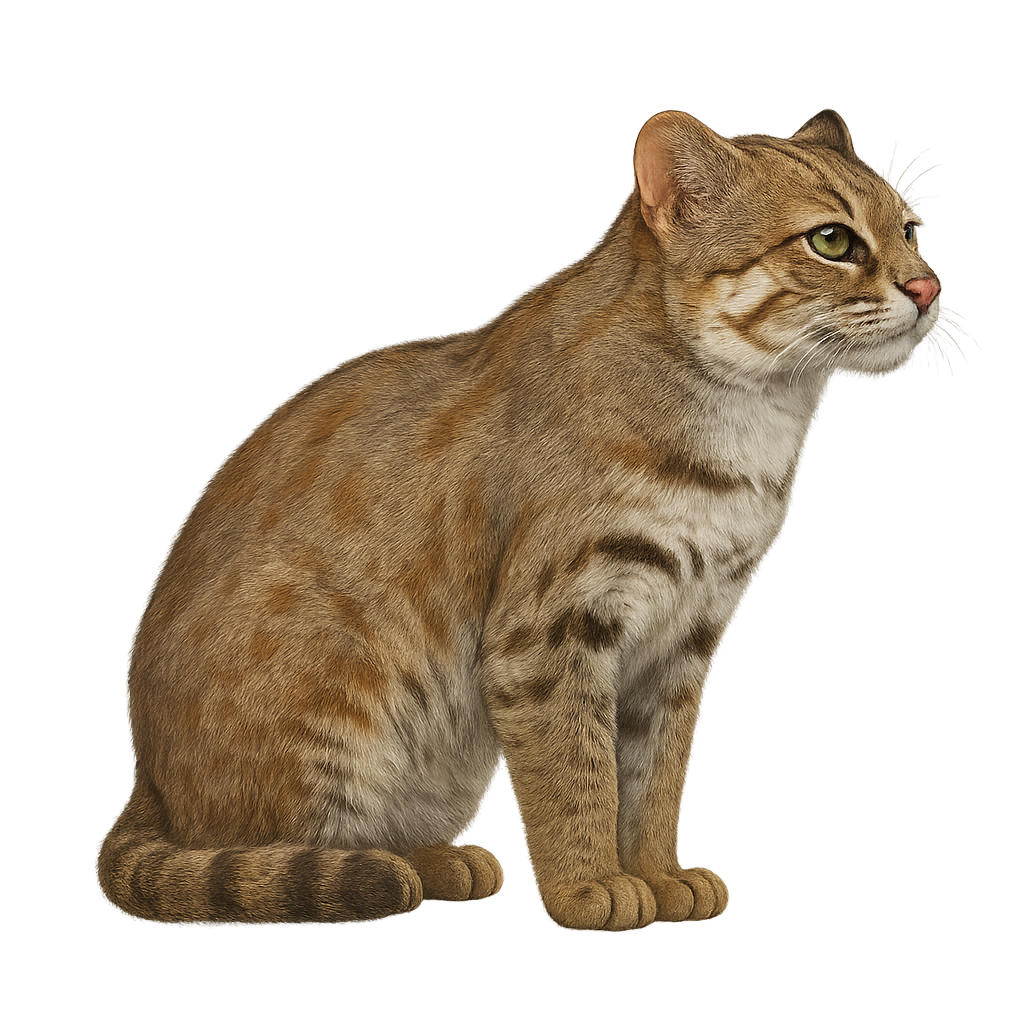Your wildlife photography guide.
Explore the rusty-spotted cat in detail, study its behavior, prepare your shots.
Where to observe and photograph the rusty-spotted cat in the wild
Learn where and when to spot the rusty-spotted cat in the wild, how to identify the species based on distinctive features, and what natural environments it inhabits. The WildlifePhotographer app offers tailored photography tips that reflect the rusty-spotted cat’s behavior, helping you capture better wildlife images. Explore the full species profile for key information including description, habitat, active periods, and approach techniques.
Rusty-spotted cat
Scientific name: Prionailurus rubiginosus

IUCN Status: Near Threatened
Family: FELIDAE
Group: Mammals
Sensitivity to human approach: Very shy
Minimum approach distance: 10 m
Rut period: January to February
Gestation: 65-70 jours
Births: March to April
Habitat:
dry forests, grasslands, scrublands
Activity period :
Mainly active at night, generally discreet during the day.
Identification and description:
The rusty-spotted cat, Prionailurus rubiginosus, is one of the smallest wild cats in the world, measuring about 35 to 48 cm in length, with a tail of 15 to 30 cm. Its coat is gray-brown with distinctive rusty spots, hence its name. This feline primarily inhabits dry forests and grasslands in India and Sri Lanka. It is nocturnal and solitary, feeding on small mammals, birds, and insects. Although discreet, it is an agile and fast hunter. Its ability to climb trees and sneak through dense bushes allows it to escape predators. Deforestation and habitat loss are the main threats to its survival.
Recommended lens:
400 mm – adjust based on distance, desired framing (portrait or habitat), and approach conditions.
Photography tips:
To photograph the rusty-spotted cat, it's essential to remain discreet and patient. Use a telephoto lens of at least 400mm to capture detailed images from a distance without disturbing the animal. Choose low-light hours, such as dawn or dusk, to maximize your chances of seeing it active. Focus on natural habitats like dry forests and grasslands. Be attentive to subtle movements in the bushes, as this feline is very stealthy. Finally, always respect the safety distance to avoid stressing the animal.
The WildlifePhotographer App is coming soon!
Be the first to explore the best nature spots, track rutting seasons, log your observations, and observe more wildlife.
Already 1 429 wildlife lovers subscribed worldwide

